GMT Watches Explained, by Looking at the Bell & Ross Collection of GMT Models
Because pilot's watches and GMT functionality truly match.
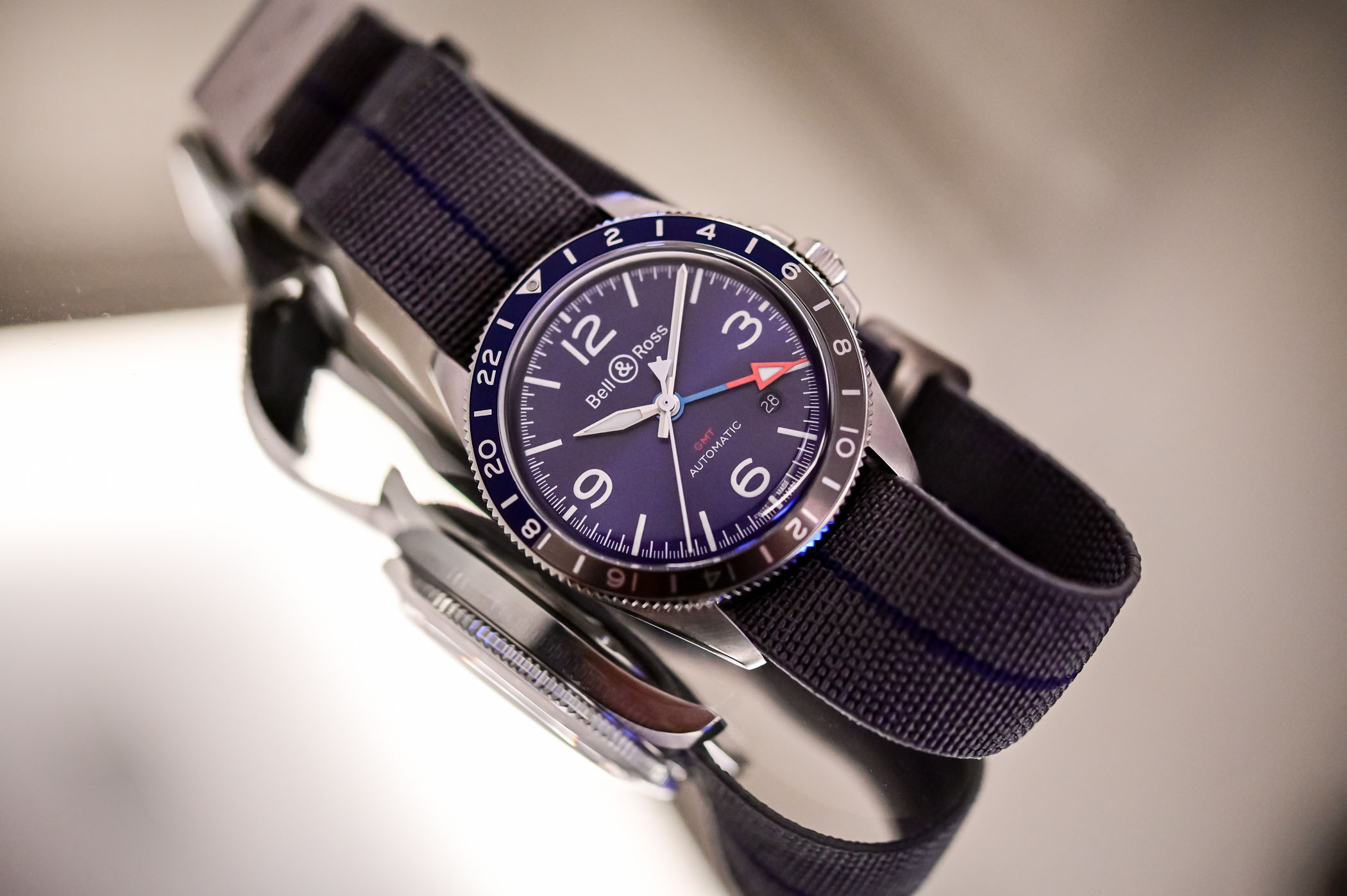
Since its very creation, Bell & Ross has focused on military forces and, as its preferred theme, pilots. From the earliest days, when the watches were manufactured by Sinn to the present collections, pilots have been the central focus of the brand’s core collection. But “pilot” is a wide definition. The needs of a jet fighter officer aren’t the same as an airline captain or the needs of a frequent traveller. In this context, there’s one definitive function, the GMT complication, the one that helps you track time-zones. And Bell & Ross is no stranger to the GMT watch. Today, we’ll try to understand how it works by looking at three watches from the Paris-based brand.
The days of military watches at Bell & Ross are far from over; however, the brand had to adapt to the real world and, without losing its origins of military-inspired and pilot’s watches, it started to offer watches for the urban gentleman. The pinnacle of this vision was launched last year, with the BR05, a watch that evokes the original design codes of the brand, yet without a military vocation. Still, the collection is packed with utilitarian timepieces and the GMT function is well represented.
GMT Function and pilot’s watches
The original concept of the pilot’s watch is tightly linked to the needs of military forces. From the earliest men’s wristwatches, the 1904 Cartier Santos, to more advanced and purpose-built watches during WWII, pilot’s watches were basically utilitarian field watches, answering the needs of military officers. However, after WWII, the situation changed when civilian aviation appeared. And with the development of business and leisure travels, people started to cross time-zones…
Civilian pilots cross borders and time-zones constantly. As such, being able to track the local time as well as a second time-zone. for instance, the time at home or at your company’s headquarters, was extremely practical. This is when the first GMT watches came to the market, civilian watches developed for civilian pilots. In 1954, the GMT-Master was born, dictated by the needs of PanAm pilots, a model that would define the concept of the GMT watch for the decades to come. And this kind of watch was soon adopted by frequent travellers and people working in international environments. To this day, as we often say at MONOCHROME, the GMT complication is certainly the most useful and most realistic function of a watch, especially in our 21st-century environment.

Bell & Ross, with its focus on pilot’s watches, soon added this function to its catalogue. The development of the BR 01 and BR 03 collections, with their iconic shape inspired by military aviation, made it clear that the GMT function was a necessity. Since the late 2000s, Bell & Ross always had this complication in its collection – such as the BR 03-51 GMT above.

Reinforcing its legitimacy in this field, the brand recently created a watch especially for Air France employees, based on the BR V2-93… And what else could it be than a GMT watch? The BR V2-93 GMT A320 AF celebrated the 30th anniversary of the Airbus A320, the cornerstone of the Air France fleet, and produced in 500 pieces only for employees of the French airline.
How Does the GMT Function work?
Before we look at the GMT collection by Bell & Ross, we thought a technical reminder about GMT watches and how they actually work in the real world might come in handy. To illustrate the functionality, we will be showing you two models currently available: the BR 03-93 GMT and the BR V2-93 GMT.
First of all, it has to be noted that there are mainly two types of GMT watches. While the final result in terms of design is the same, since they both rely on a classic combination of 4 hands (local hours, home hours, minutes and seconds), the main difference is in the way you adjust the additional time-zone and the local time. Higher-end watches, such as Omega, Rolex or Grand Seiko, adjust the local time in one-hour increments – a more complex technical solution that is also very practical when landing.
Most GMT watches, those equipped with ETA or Sellita movements, have gone for a slightly simpler mechanical solution where the GMT hand is adjusted in one-hour increments. This solution is practical in a business environment because the local time isn’t affected and just one extra step is required when travelling. Let’s look at this question with the BR 03-93 GMT:
Let’s explore the basics of a GMT watch. Like most watches, it features three main hands for the hours, the minutes and the seconds. The main specificity is the presence of an additional hand, here highlighted in orange, displaying a second time-zone. On the contrary to the standard hours hand, it runs on a 24-hour basis, making a full revolution around the dial once a day. It is read thanks to the fixed 24-hour scale engraved on the bezel.
Here are three different functions you can use with a GMT hand:
- as a day/night indicator: its first utility, when not travelling or not working in an international environment, is to act as a day/night indicator. In this case, the GMT hand is set to the same time as the main hour hand
- as a tool to track a time-zone abroad: while using the main hand to display the local time, you can use the GMT hand to track an additional time-zone, for instance, the time in a subsidiary office, or the time-zone where one of your friends or a relative lives
- as a traveller’s tool: this is where GMT watches make the most sense. When landing in a foreign country after a long flight, a GMT watch will indicate the local time via the main hours hand and the home time, or the time of the place you took off, via the GMT hand.

How is a GMT watch adjusted? If you are at home or at the office, the second position of the crown is used to adjust the GMT hand in one-hour increments. You can select the desired time-zone without affecting timekeeping as the movement continues to run normally. When travelling, two steps are required. First, pull out the crown to the third position and adjust the main hands to local time. Then, bring the crown back to the second position and adjust the GMT hand to home time. This way, you can simultaneously track the time of the place you are in and the time at home.
The rotating GMT bezel
Some watches offer the possibility of tracking a third time-zone, thanks to a rotating bezel. While the mechanics are identical, rotating the bezel adds another function to the watch. This is the case with the BR V2-93 GMT:
This model, which was introduced in 2018 and later followed by a blue version, features a bi-directional bezel with a 24-hour scale. The idea with these bezels – also found on other watches like the GMT-Master and the Seamaster Planet Ocean – is to calculate the time in most time-zones around the globe. As long as you know the time difference, you can track the time anywhere. You just need to rotate the bezel the desired number of clicks – 1 click = 1 hour (with 24 clicks) – and the GMT hand will indicate the time you’re searching for.
The photo on the left shows the watch in “standard” mode, with the 24-hour GMT hand used as a day/night indicator – pointing at 10 AM. Let’s take a concrete example. You’re in New York and it’s 10:10. If you want to track the time in Los Angeles, which is 3 hours behind, you just have to rotate the bezel by 3 increments, and then the GMT hand will indicate 7 AM, the current time in LA.
The GMT Collection by Bell & Ross
Many watches at Bell & Ross have been equipped with a GMT function in the past, such as the BR 03-51, featuring a large date and the additional time-zone in a sub-dial, or the Vintage BR 123, the predecessor to the current BR V2 collection, which featured a central GMT hand and a fixed bezel engraved with a 24-hour scale.
Today, Bell & Ross continues to explore the concept of watches made for civilian pilots and frequent travellers with three different watches. One is an evolution of the classic “circle within a square” watch, which has been urbanized in line with the civilian vocation of this complication. The two other models are derived from the Vintage V2 watch. Once again, the design codes are more urban than some of the field-oriented editions of this watch.
The Bell & Ross BR 03-93 GMT feels very familiar, with its 42mm x 42mm case, inspired by dashboard flight instruments. As such, it features the round bezel on top of a square case, with four functional screws. Being a civilian-oriented piece, B&R has opted for a non-coated stainless steel case, with more elegant finishes like the polished bevels on the sides. The GMT function has been added by means of a 24-hour engraved bezel with an orange triangle at 12 o’clock. The dial is once again classic B&R, with stylized applied Arabic numbers and propeller-shaped hands. The GMT indication is clearly highlighted in orange. The watch is powered by the Calibre BR-CAL.303, derived from the ETA 2893-2. More details here.
Specs BR 03-93 GMT: 42mm stainless steel case – sapphire crystal – 100m water-resistant – graduated fixed bezel – calibre BR-CAL.303, automatic with GMT indication – black calfskin with stamped B&R logo – EUR 3,300
The other two watches with GMT functionality now in the collection at Bell & Ross are based on the recently redesigned Vintage collection, with a 41mm case featuring polished and satin-finished surfaces, a more compact shape allowing for great comfort on the wrist and nice elements, such as the protected crown and the highly domed sapphire crystal on top. The Bell & Ross BR V2-93-GMT is equipped with a 24-hour bi-directional bezel – as explained above – with a two-tone aluminium insert to differentiate day from night. The watch is available in two editions, one with a black dial and black/grey bezel, the second with a blue sunburst dial and blue/grey bezel. Both watches are powered by the Calibre BR-CAL.303 and are available on a steel bracelet. The black version is also available on a tropic-like rubber strap, while the blue edition can be ordered on a grey and blue elastic canvas strap. More details on the black version here and on the blue version here.
Specs BR V2-93-GMT: 41mm stainless steel case – sapphire crystal – 100m water-resistant – bi-directional 24h bezel – calibre BR-CAL.303, automatic with GMT indication – steel bracelet, or rubber strap, or elastic canvas strap – EUR 2,900 (rubber or canvas) or EUR 3,200 (steel bracelet)



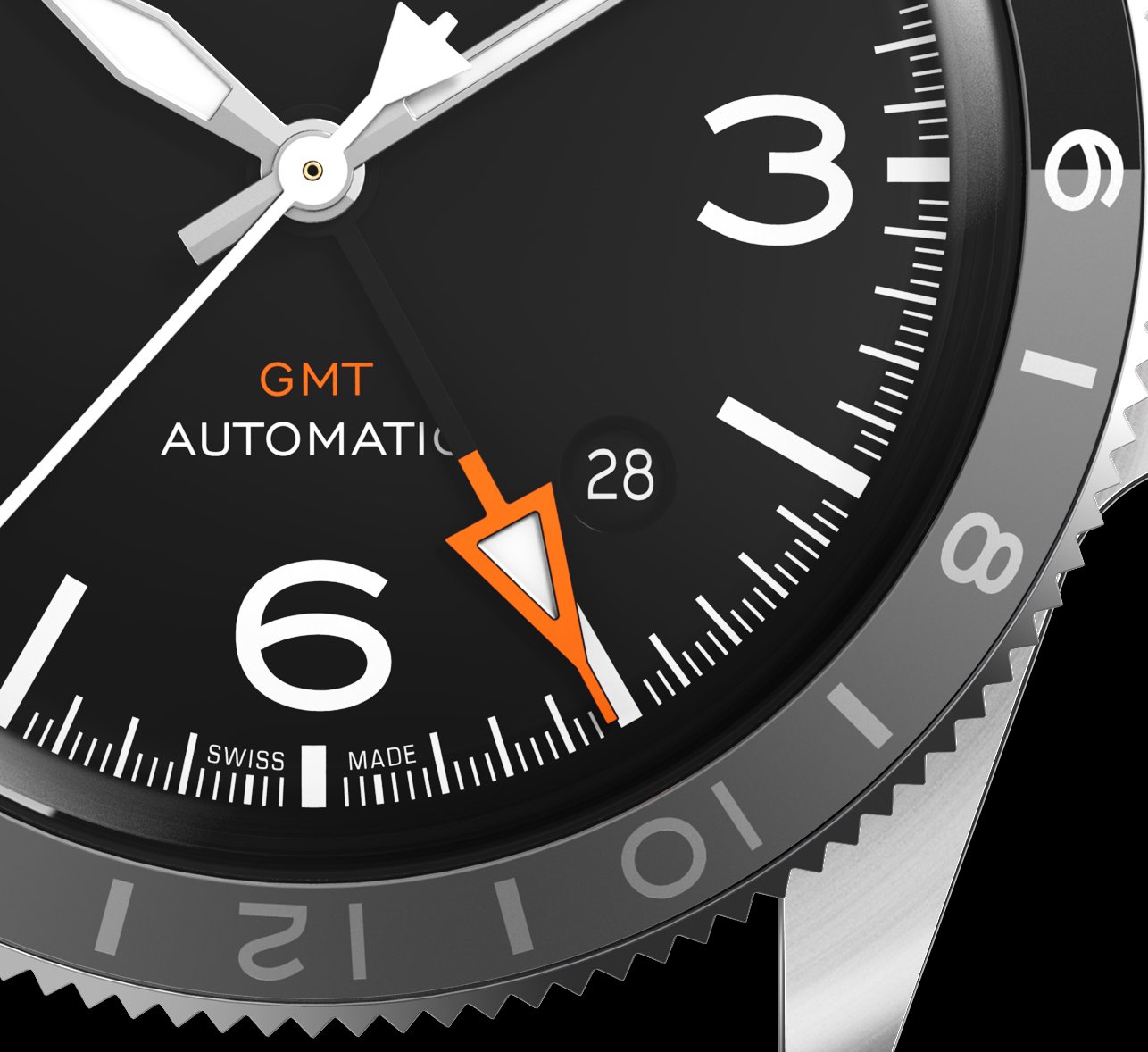

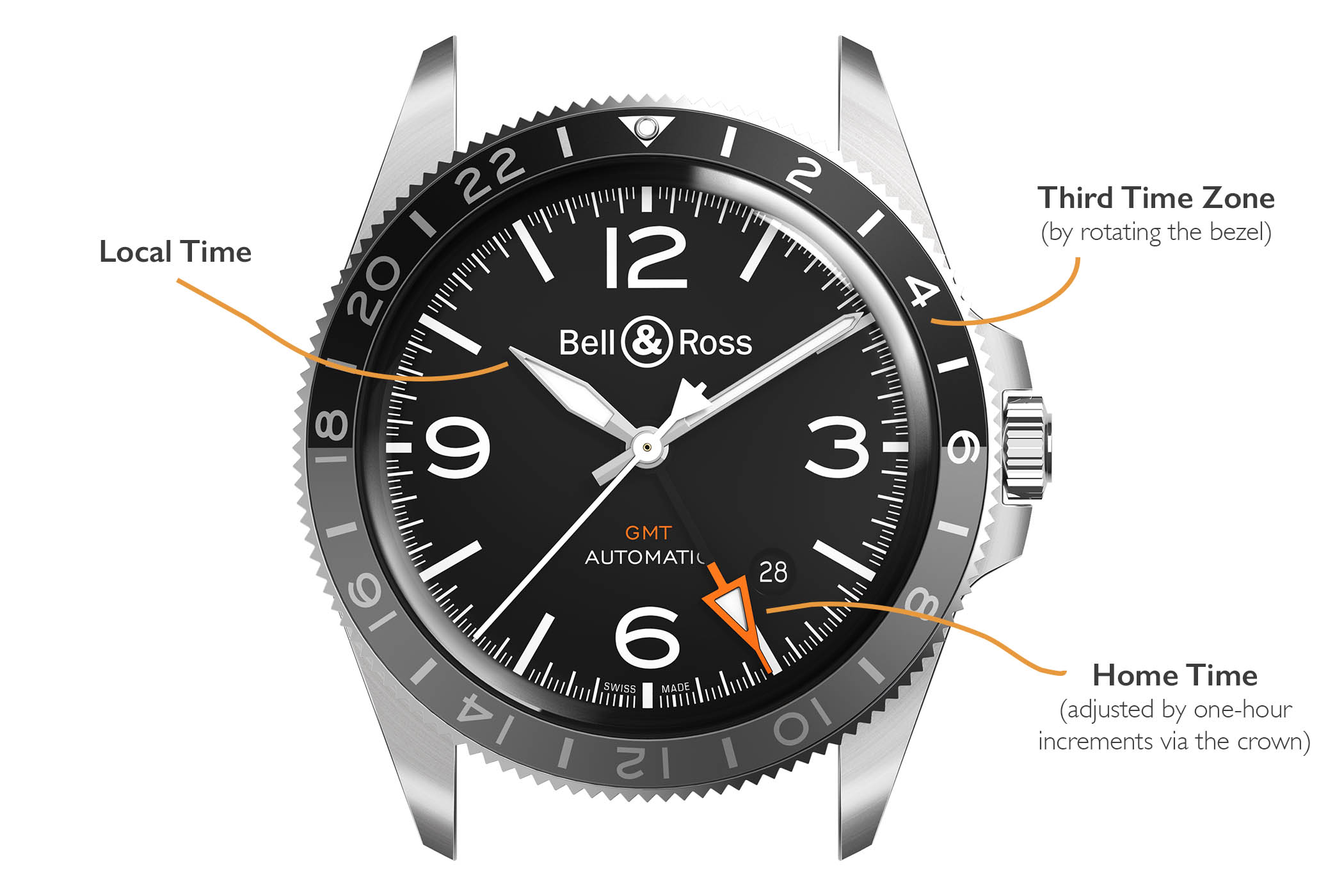
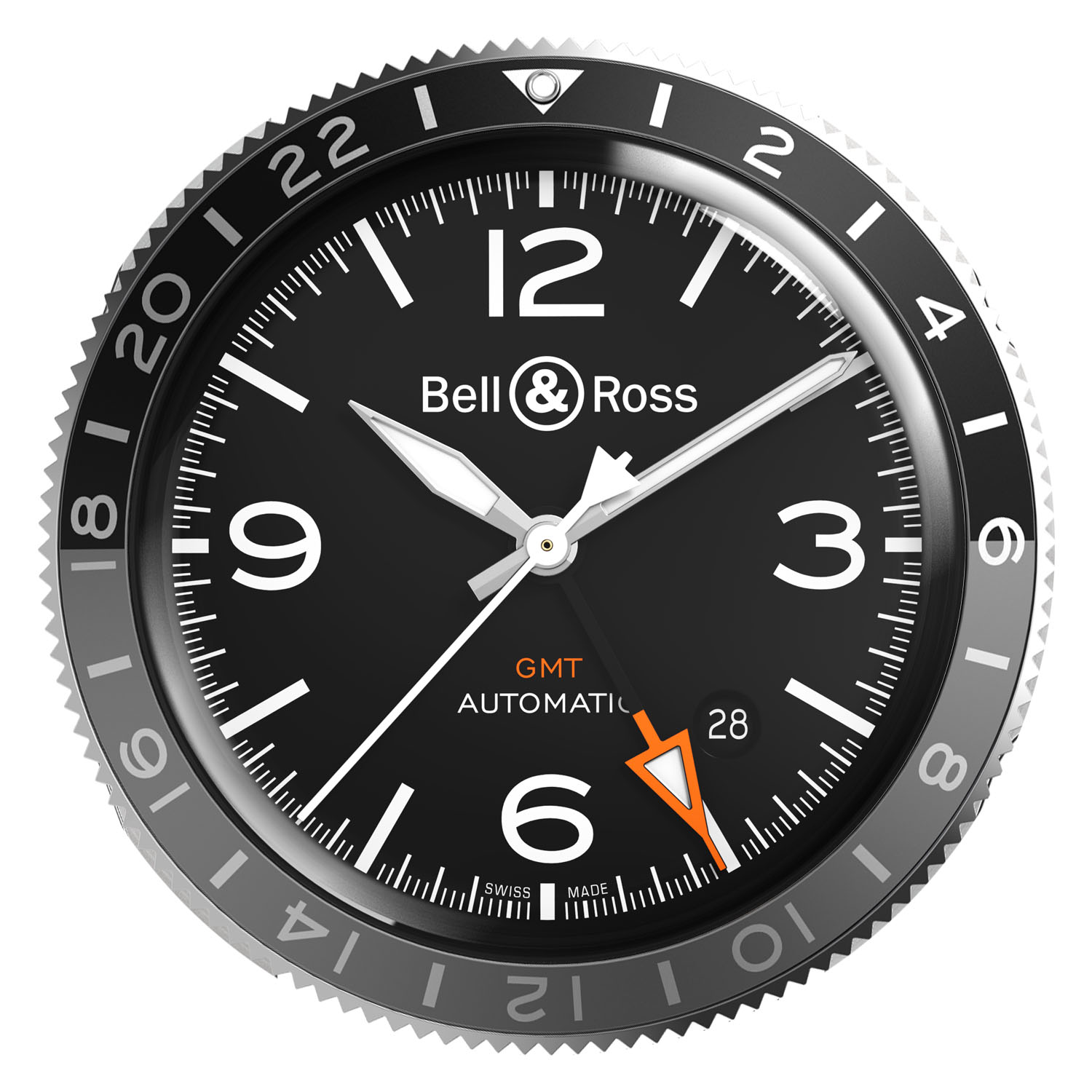
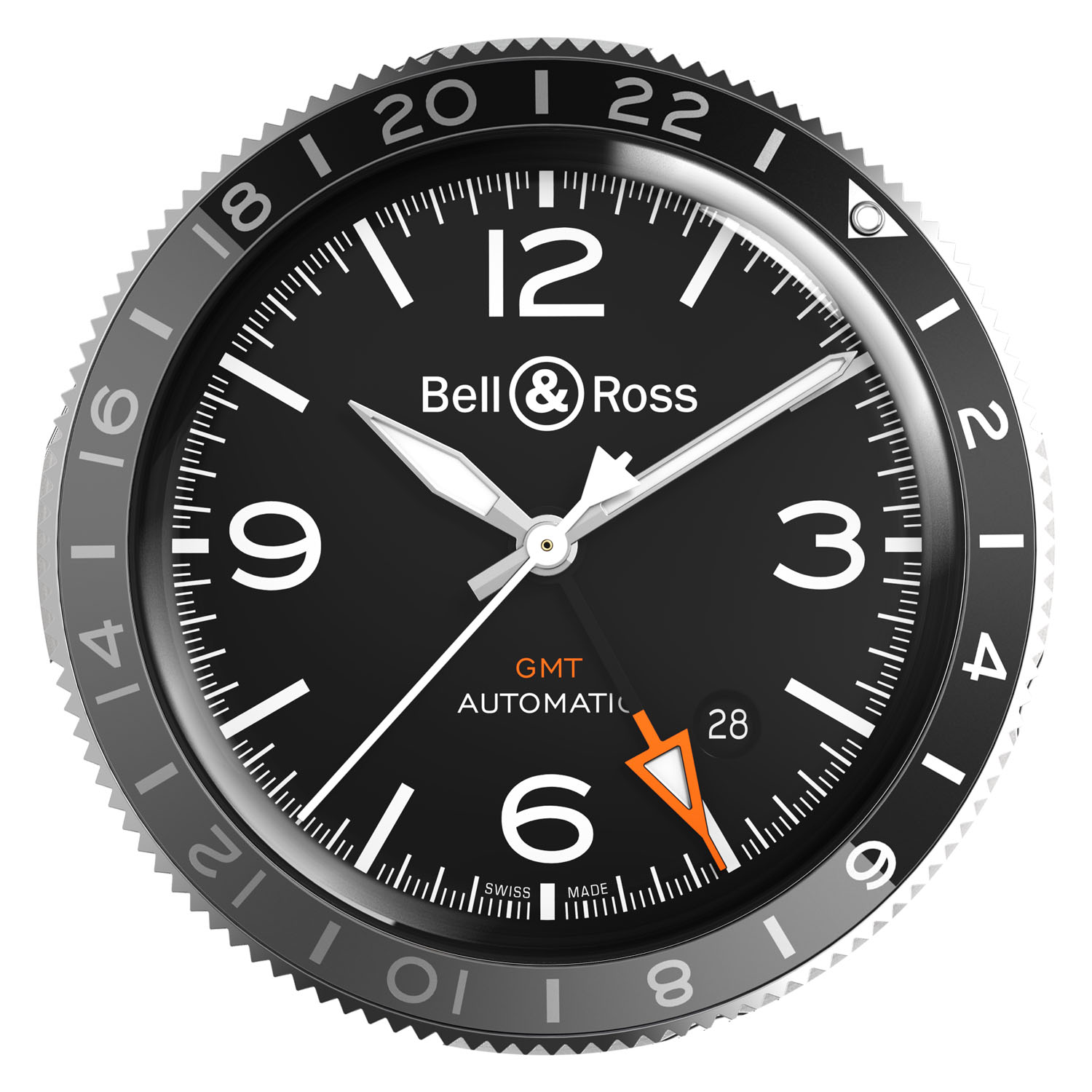







1 response
Great review. I’ve always loved the aesthetics that Bell & Ross watches present, especially the GMT models. Please keep up the great work. Thanks!